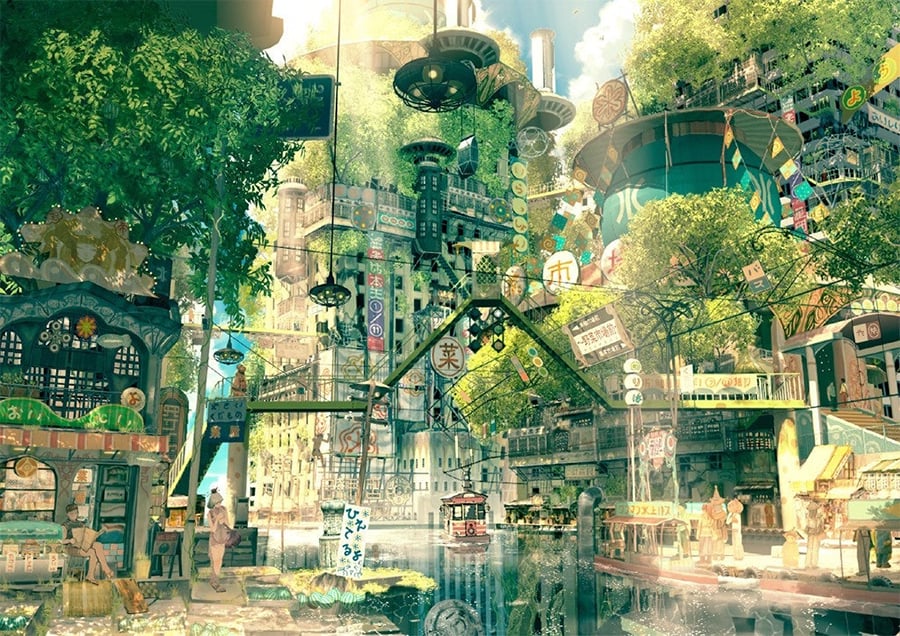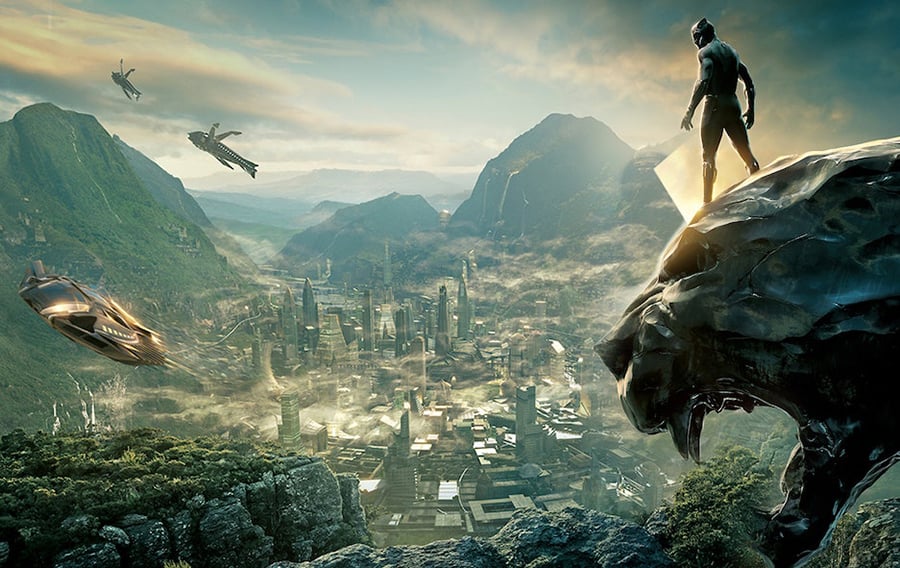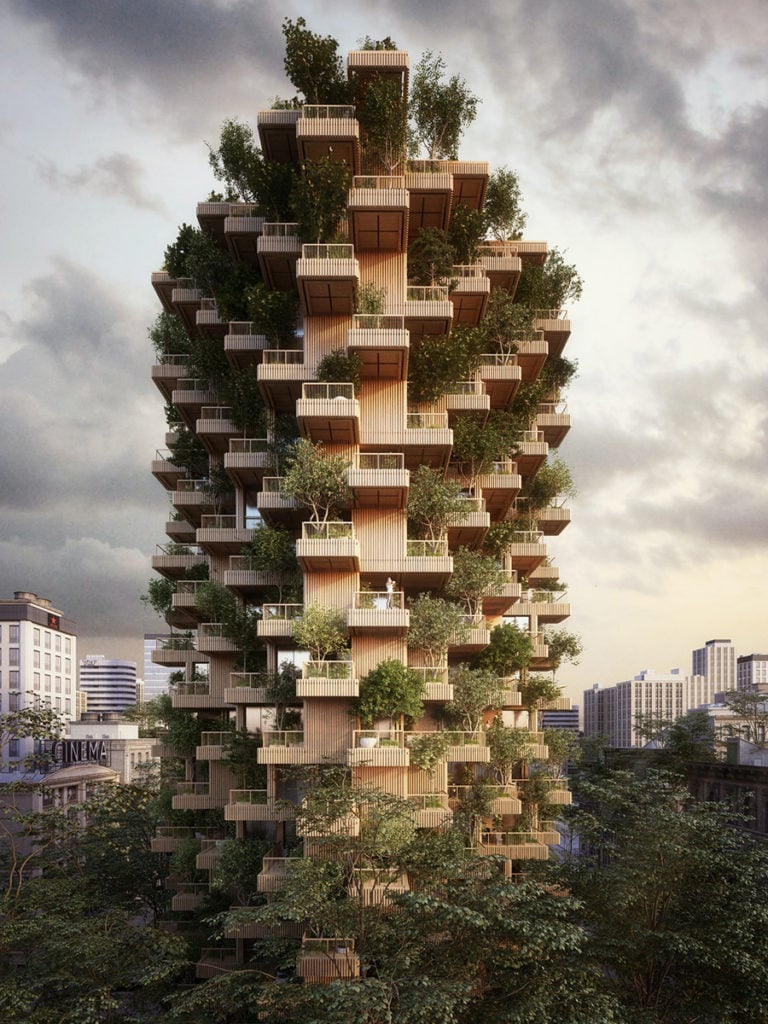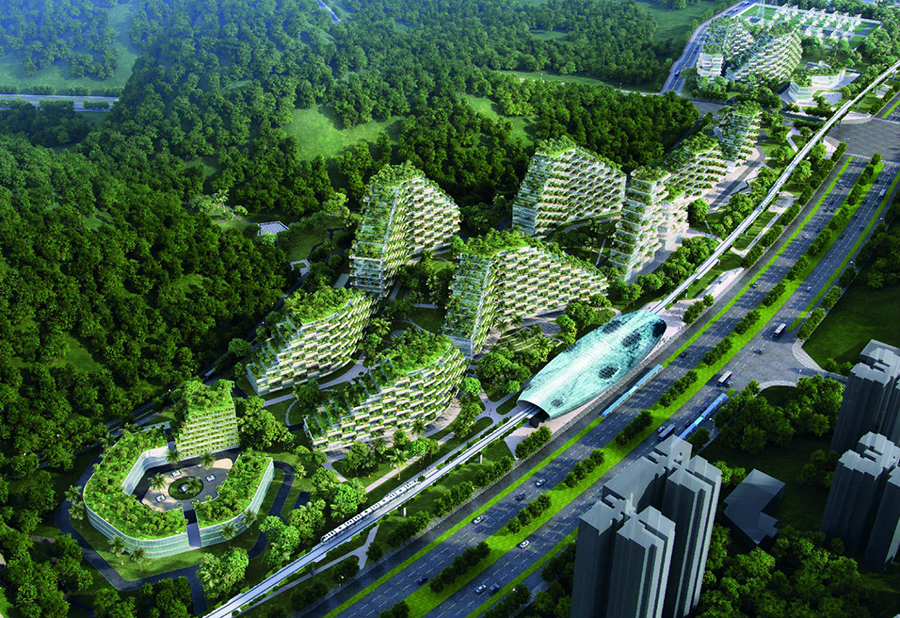Opinion Advocates for ideas and draws conclusions based on the author/producer’s interpretation of facts and data.
Why “Solarpunk” Gives Me Hope for a More Sustainable Future

One of my most oft-repeated climate maxims is “paint the positive future.” We need to visualize what a sustainable, decarbonized world looks like if we’re going to get people excited about climate action (cue jazz hands and zero-carbon fireworks). But while there are a few great examples hither and thither, these positive visions of the future are not as plentiful as they ought to be. And if the virality of the lovely poet Amanda Gorman tells us anything, it is that we have been starved of beautiful inspiration these past few years.
Which is why I’m intrigued by solarpunk. What is it? Writes Jay Springett on Medium:
Solarpunk is a movement in speculative fiction, art, fashion, and activism that seeks to answer and embody the question “what does a sustainable civilization look like, and how can we get there?” The aesthetics of solarpunk merge the practical with the beautiful, the well-designed with the green and wild, the bright and colorful with the earthy and solid. Solarpunk can be utopian, just optimistic, or concerned with the struggles en route to a better world—but never dystopian. As our world roils with calamity, we need solutions, not warnings. Solutions to live comfortably without fossil fuels, to equitably manage scarcity and share abundance, to be kinder to each other and to the planet we share. At once a vision of the future, a thoughtful provocation, and an achievable lifestyle.

As Noah Smith writes in his newsletter, Noahpinion (nice!), solarpunk is more an aesthetic movement than a literary one.
Solarpunk at this point is basically a gestalt of images and ideas—cities physically merging with nature, powered by clean energy, in a future usually implied to be much more peaceful, diverse, and egalitarian. But so far it lacks any of the narrative and character tropes that define cyberpunk, and lacks much of the technological rigor that defines biopunk.
I agree that it’s silly to suffix the word punk to anything and everything, but it’s also kind of … funpunk! And it’s hard not to love these visions of a world where cities merge with nature. It’s an idea explored in an amazing essay by Kendra Pierre-Louis called Wakanda Doesn’t Have Suburbs, in which she debunks the idea that humanity is always at odds with nature. It’s a trope evident in so much of pop culture, where humans are the stain on a pristine landscape, the scourge. “We are the virus” is essentially baked into our art. But Black Panther redefines the relationship between human and nature, to dazzling effect.
Black Panther’s vision of Wakanda rejects the oft-repeated story that we humans and our environment are natural enemies. Instead, it tells a story in which humans have become technologically sophisticated while maintaining a flourishing relationship with their surrounding environment.
In other words, Black Panther is solarpunk.

Black Panther’s blending of healthy tech and nature reminds me of the treeful skyscraper prototypes that appear every few months on all the design blogs I love. They’re usually fanciful creations built of greenery and compressed laminated timber dreams. And the first comment on these posts is always, “but those trees would never survive.” Which is…not the point. (And also not true—the trees look just fine on these award-winning Milanese skyscrapers.)

The point of solarpunk is to start telling that new, creative story. Illustrating a world where humans don’t live in opposition to nature, and where we also don’t forfeit the advancements of modern life, but instead flourish in harmony with the environment. The air is clean because we’ve decarbonized. The soil is healthy, people are healthy, communities are healthy. Food tastes better. People are happier. Technology facilitates life without undermining it. There is no fascism, racism, or autotune. The whole world is thriving to a catchy beat. (And everyone is dancing all the time. OK, that part’s just me.) I think Kendra Pierre-Louis puts it best:
Once upon a time, some humans told a story about their relationship to the Earth, and they used it to build a world that was beautiful but flawed. Over time, people realized that was the wrong story and they constructed a new one, one that said they could live in harmony with their environment. And they used the pieces of their old story to help construct their new one.

My solarpunk is a mix of kibbutz, absurdist art, rooftop gardens, mangroves, and Mary Poppins. But seeing my daughter’s epic Minecraft creations (a waterfall inside the house?), I realize how limited I’ve been in envisioning this positive, sustainable future. In-home renewable hydropower waterfalls for everyone. And fizzy water on tap. Can the future please have carbonated drinking fountains?
This week:
Send me your best solarpunk. In words, pictures, or interpretive dance.
Last week:
Did you make good trouble? LMK.
The end:
Thanks much for reading. If you’re new here, I’m Sarah Lazarovic. I work on communicating the importance of good climate policy and carbon pricing by day, and this newsletter and my dance moves by night. If you like MVP, you can support it by telling all your friends and frogs about it. Let me know when the newsletter is on the right track. Or send me a note when it’s not! And make sure to drag this email into your primary folder so it doesn’t end up in landfill. Have a great weekend!
P.S. This is my newsletter for the week of Jan. 22, 2020, published in partnership with YES! Media. You can sign up to get Minimum Viable Planet newsletter emailed directly to you at https://mvp.substack.com/.

|
Sarah Lazarovic
is an award-winning artist, creative director, freelance animator and filmmaker, and journalist, covering news and cultural events in comic form. She is the author of A Bunch of Pretty Things I Did Not Buy.
|


